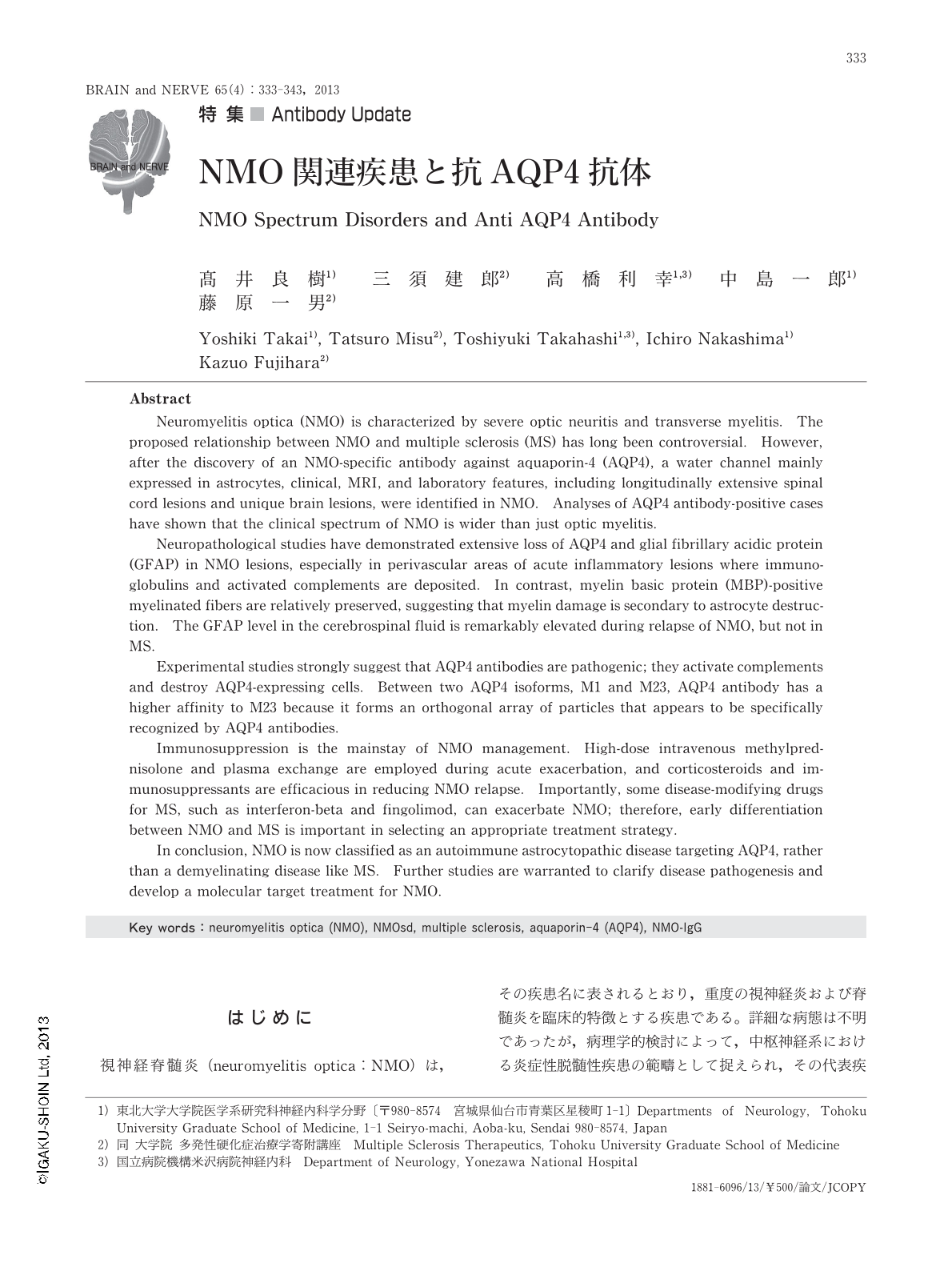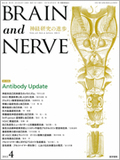Japanese
English
- 有料閲覧
- Abstract 文献概要
- 1ページ目 Look Inside
- 参考文献 Reference
はじめに
視神経脊髄炎(neuromyelitis optica:NMO)は,その疾患名に表されるとおり,重度の視神経炎および脊髄炎を臨床的特徴とする疾患である。詳細な病態は不明であったが,病理学的検討によって,中枢神経系における炎症性脱髄性疾患の範疇として捉えられ,その代表疾患である多発性硬化症(multiple sclerosis:MS)との臨床的,病理学的異同が長年議論されてきた。2004年,本疾患に特異的な自己抗体“NMO-IgG”が発見され,NMOがMSとは異なる疾患であることが強く示唆されたが,翌年その対応抗原が,アストロサイトの足突起に高密度に発現が認められる水チャネル,アクアポリン4(aquaporin-4:AQP4)である(すなわちNMO-IgG=抗AQP4抗体)ことが同定された。この発見は,当初NMOをMSと明確に区別することを可能としたバイオマーカーとして,その診断的有用性が注目された。
この有用性は現在も変わらず,本抗体の測定なしにMS/NMOの診療は不可能といえるほど,重要な役割を果たしている。また一方で,近年同抗体の病原性に関する報告が相次いでおり,NMOの本質的な病態が抗AQP4抗体による自己免疫性アストロサイト障害であることを明らかにし,そのメカニズムが徐々に明らかとなっている。本稿では,抗AQP4抗体の発見とその後の研究によって得られた,NMOの病態に対する理解とその意義について,またその知見から考えうる治療戦略について概説したい。
Abstract
Neuromyelitis optica (NMO) is characterized by severe optic neuritis and transverse myelitis. The proposed relationship between NMO and multiple sclerosis (MS) has long been controversial. However, after the discovery of an NMO-specific antibody against aquaporin-4 (AQP4), a water channel mainly expressed in astrocytes, clinical, MRI, and laboratory features, including longitudinally extensive spinal cord lesions and unique brain lesions, were identified in NMO. Analyses of AQP4 antibody-positive cases have shown that the clinical spectrum of NMO is wider than just optic myelitis.
Neuropathological studies have demonstrated extensive loss of AQP4 and glial fibrillary acidic protein (GFAP) in NMO lesions, especially in perivascular areas of acute inflammatory lesions where immunoglobulins and activated complements are deposited. In contrast, myelin basic protein (MBP)-positive myelinated fibers are relatively preserved, suggesting that myelin damage is secondary to astrocyte destruction. The GFAP level in the cerebrospinal fluid is remarkably elevated during relapse of NMO, but not in MS.
Experimental studies strongly suggest that AQP4 antibodies are pathogenic; they activate complements and destroy AQP4-expressing cells. Between two AQP4 isoforms, M1 and M23, AQP4 antibody has a higher affinity to M23 because it forms an orthogonal array of particles that appears to be specifically recognized by AQP4 antibodies.
Immunosuppression is the mainstay of NMO management. High-dose intravenous methylprednisolone and plasma exchange are employed during acute exacerbation, and corticosteroids and immunosuppressants are efficacious in reducing NMO relapse. Importantly, some disease-modifying drugs for MS, such as interferon-beta and fingolimod, can exacerbate NMO; therefore, early differentiation between NMO and MS is important in selecting an appropriate treatment strategy.
In conclusion, NMO is now classified as an autoimmune astrocytopathic disease targeting AQP4, rather than a demyelinating disease like MS. Further studies are warranted to clarify disease pathogenesis and develop a molecular target treatment for NMO.

Copyright © 2013, Igaku-Shoin Ltd. All rights reserved.


